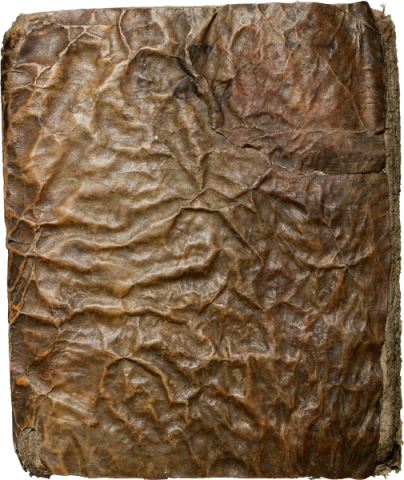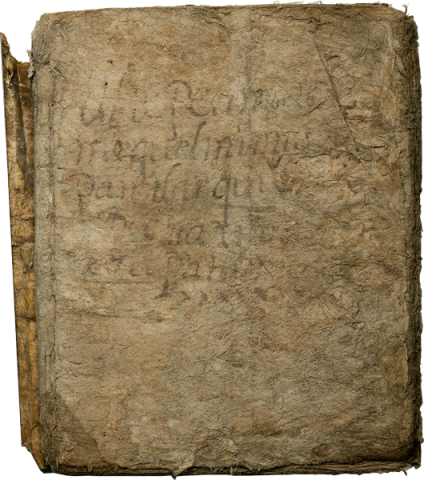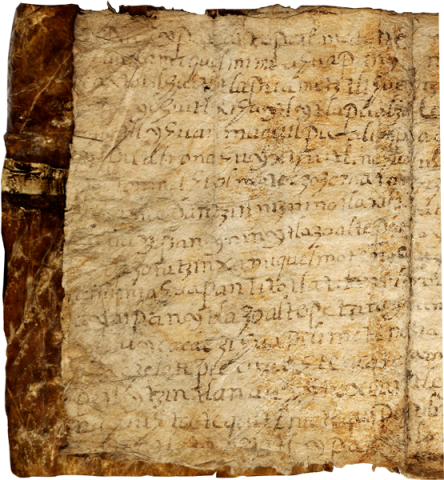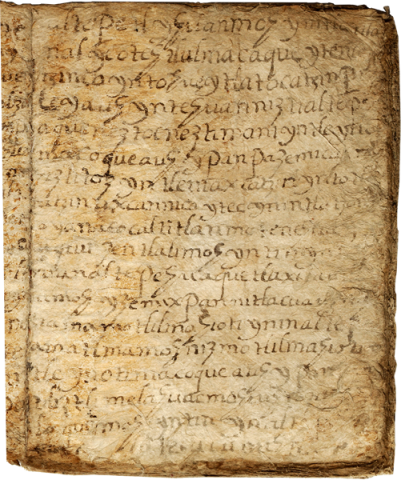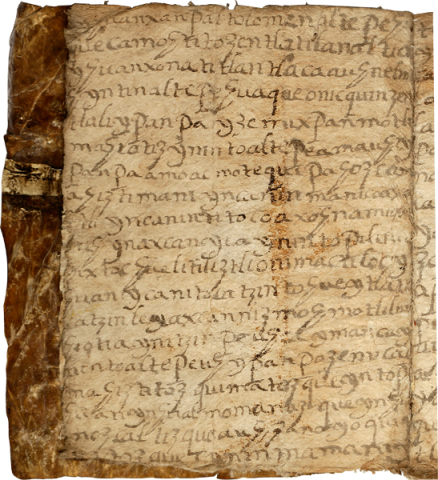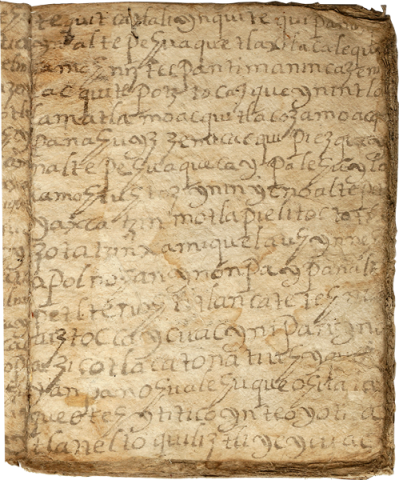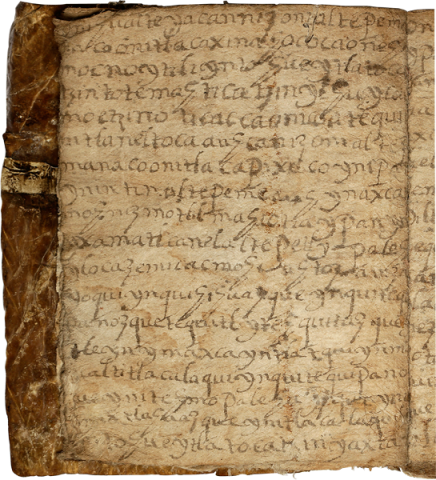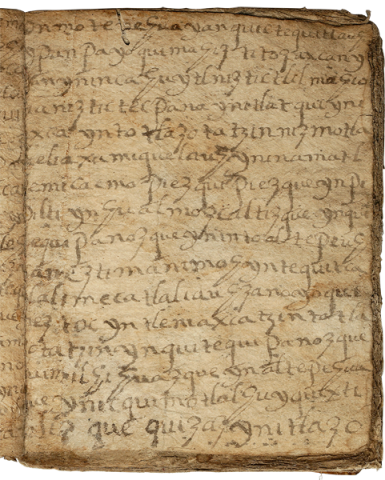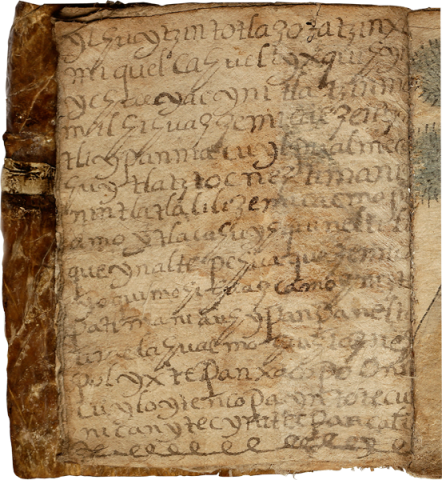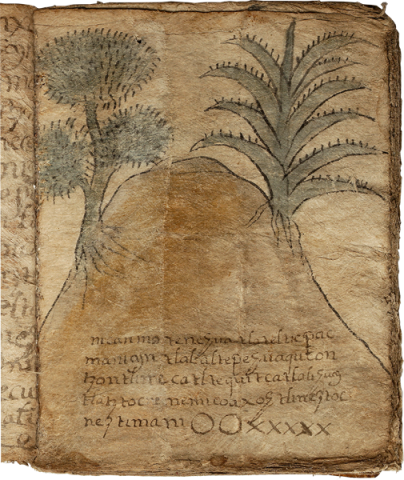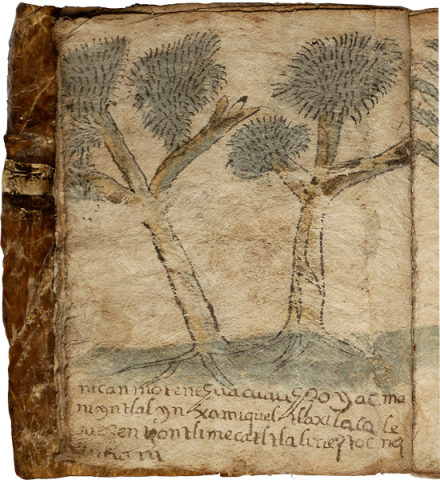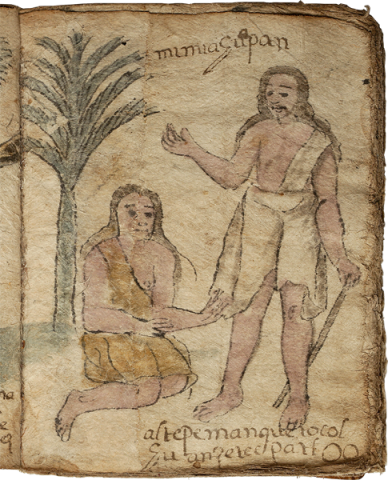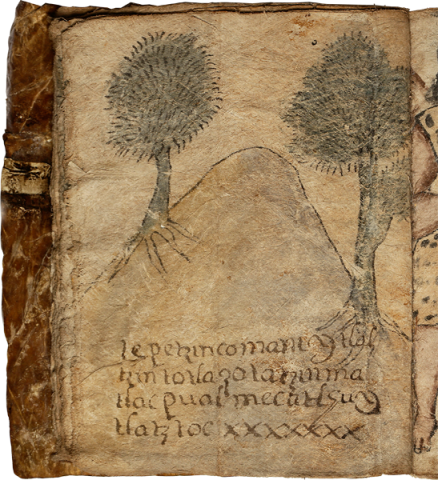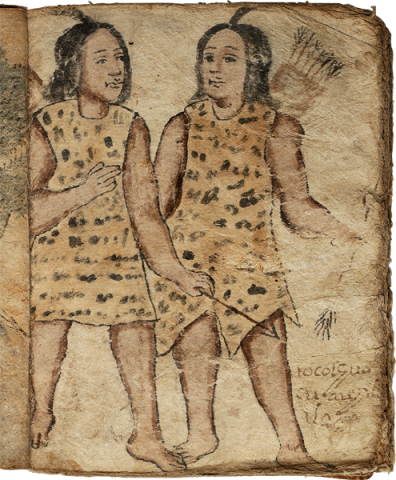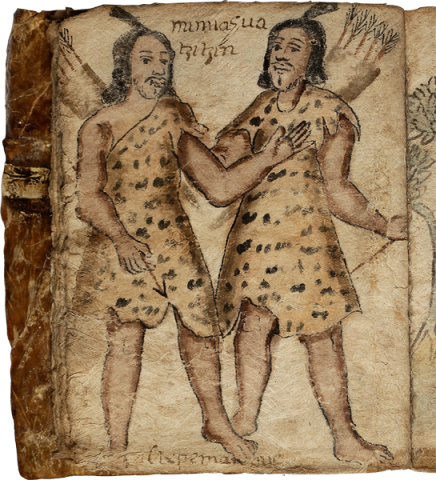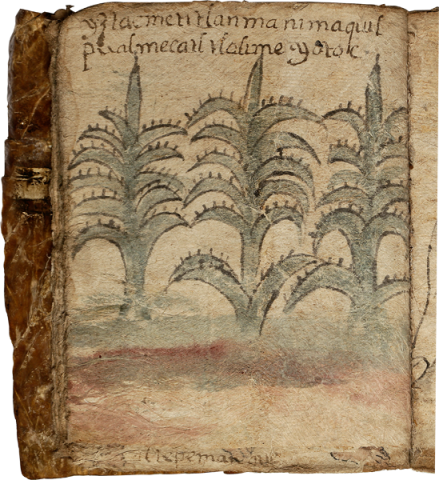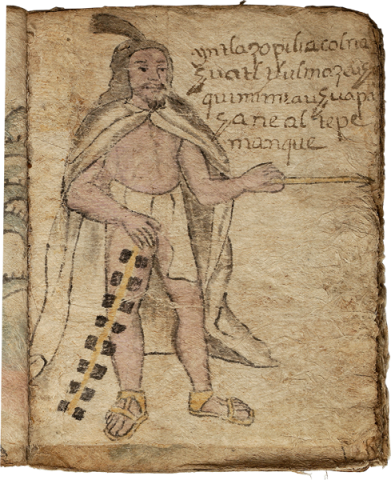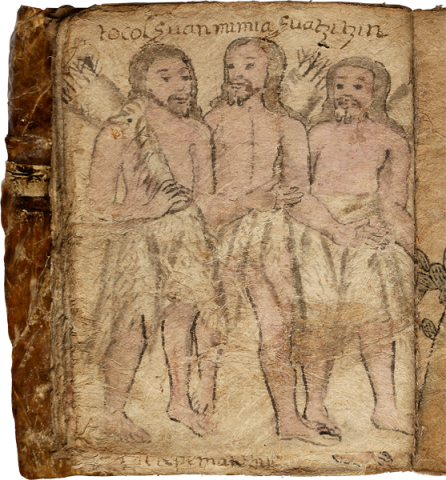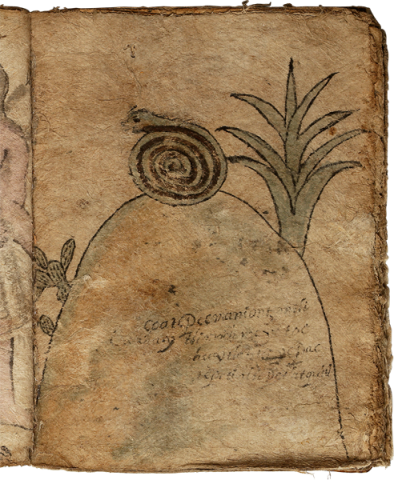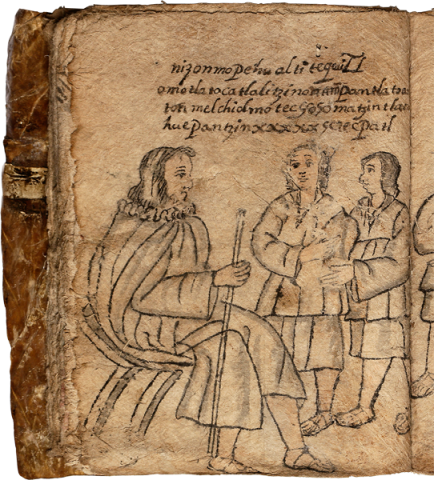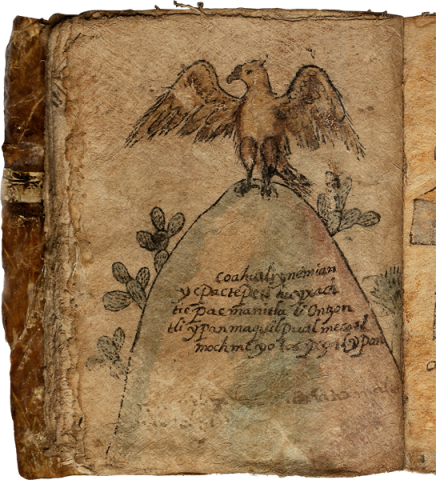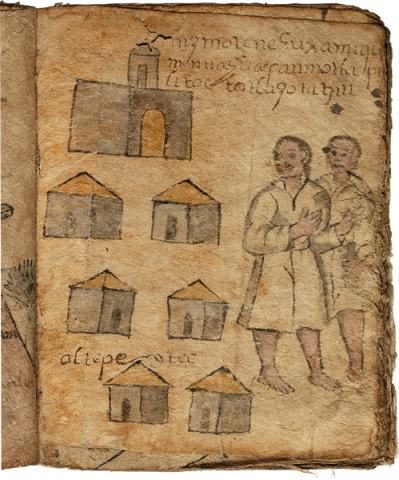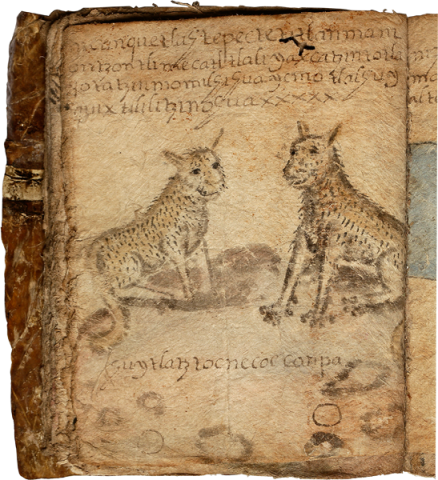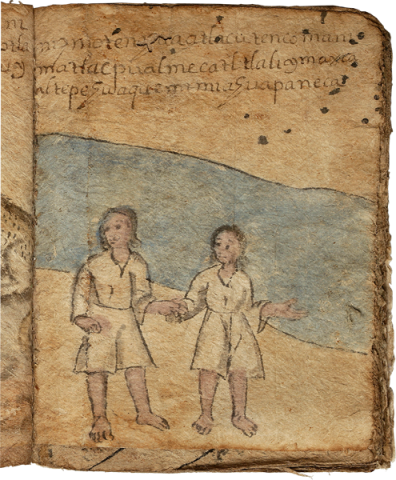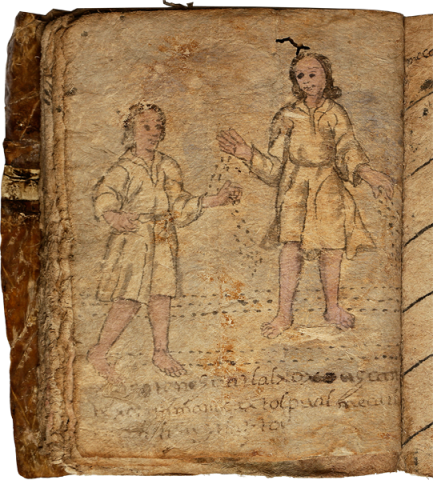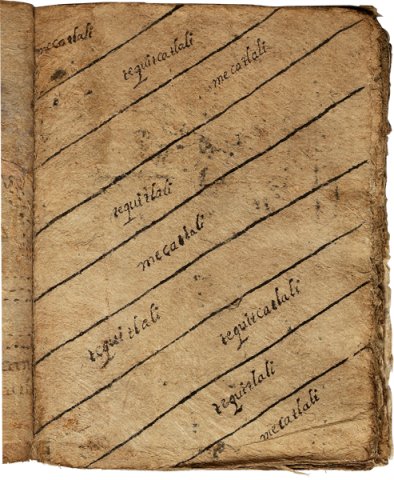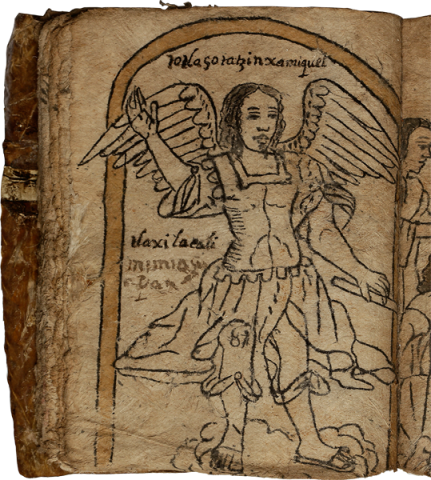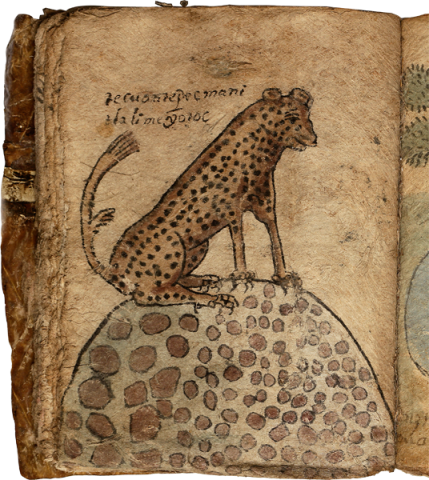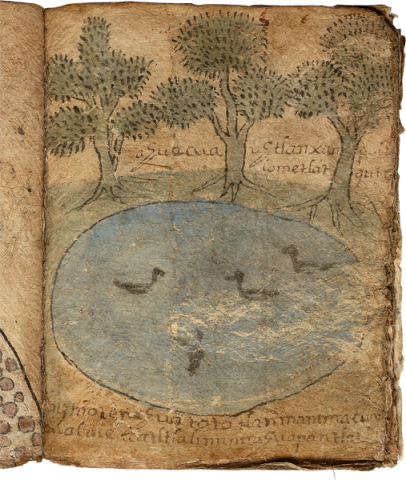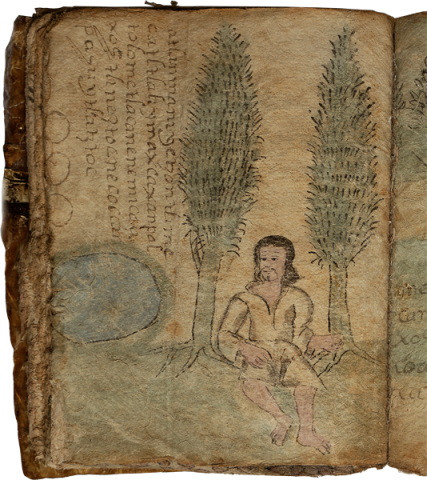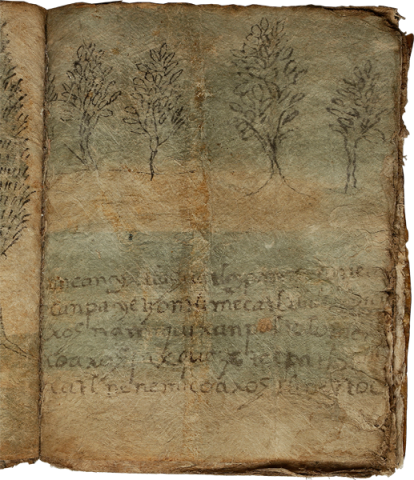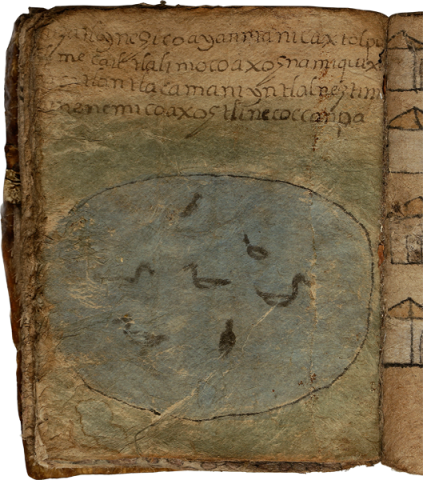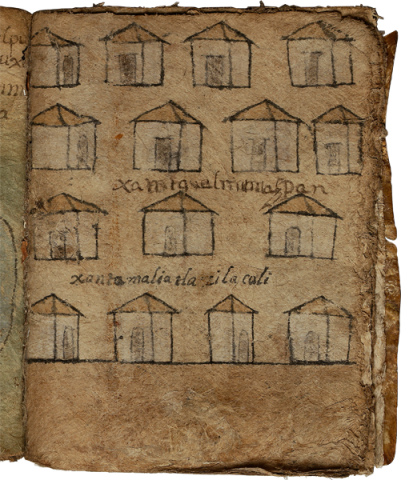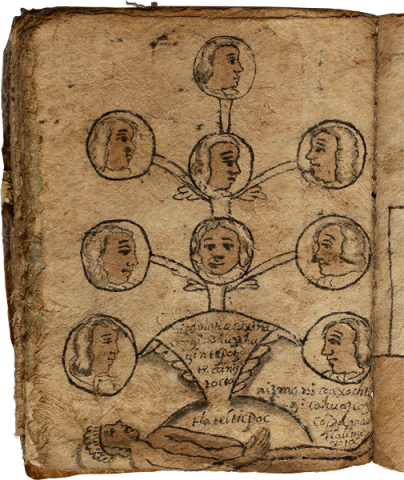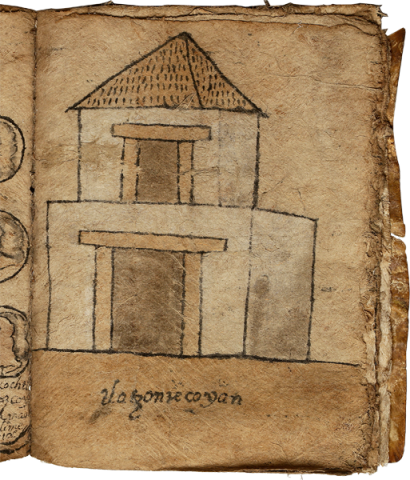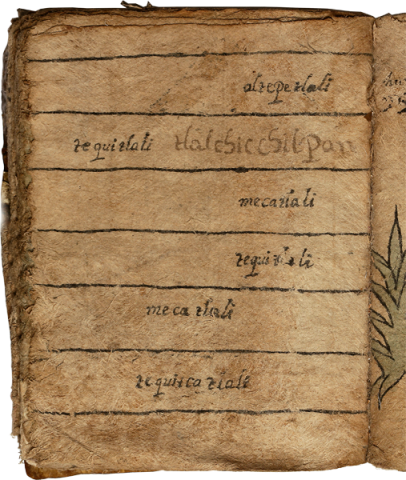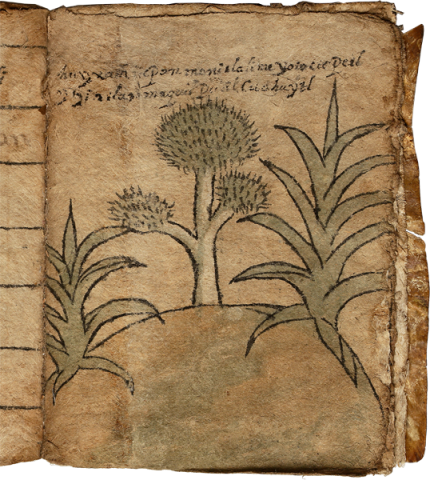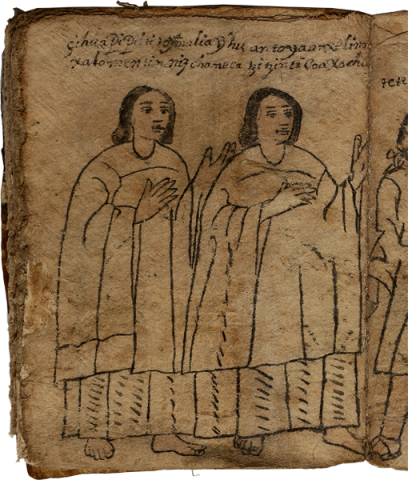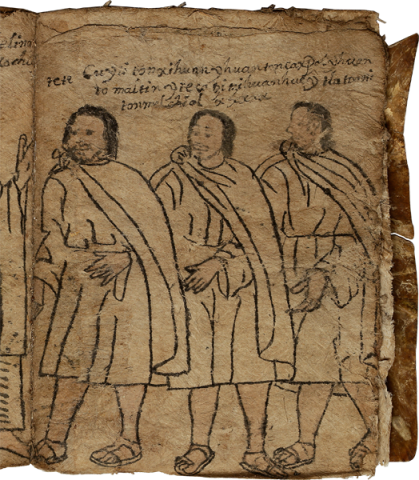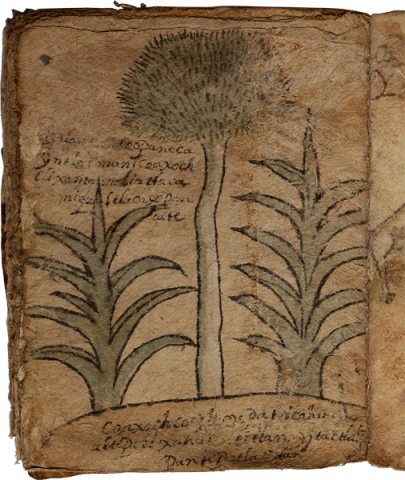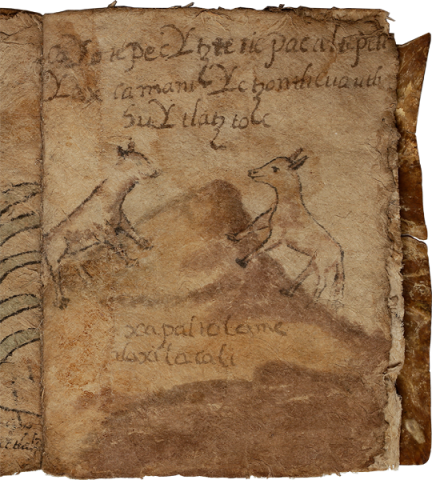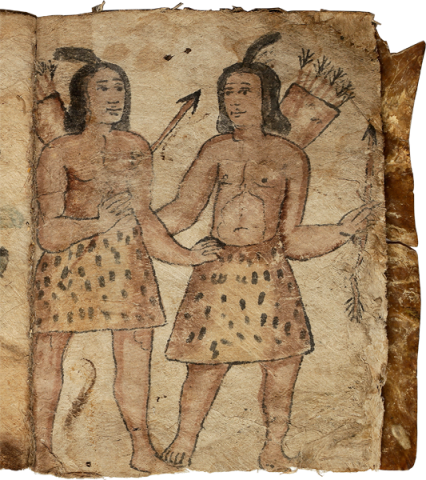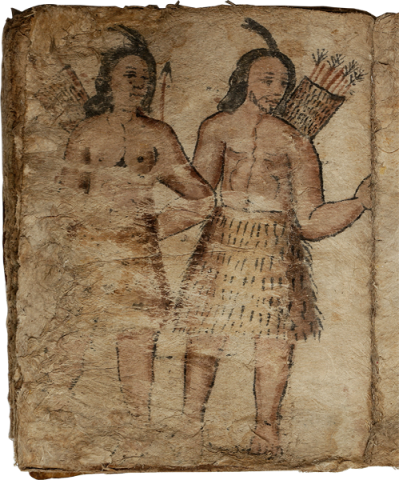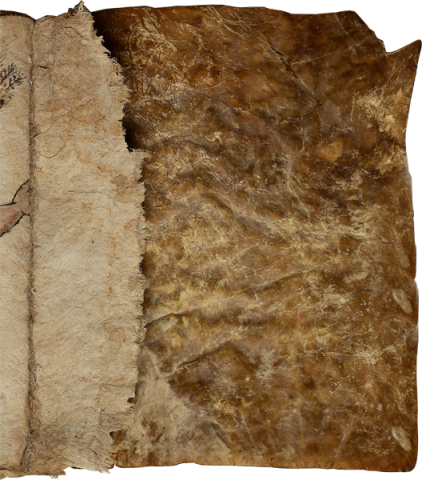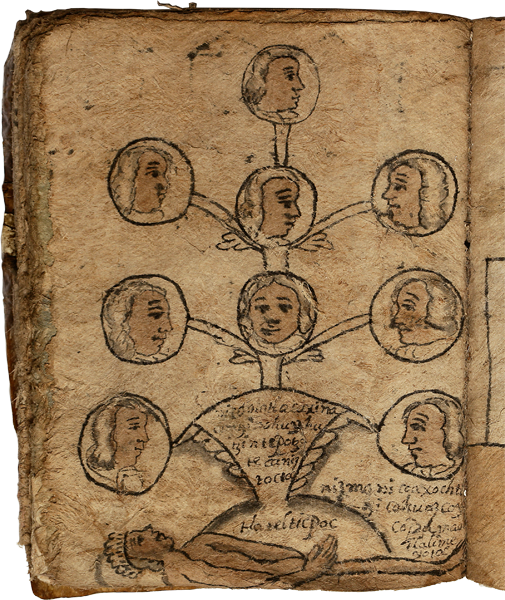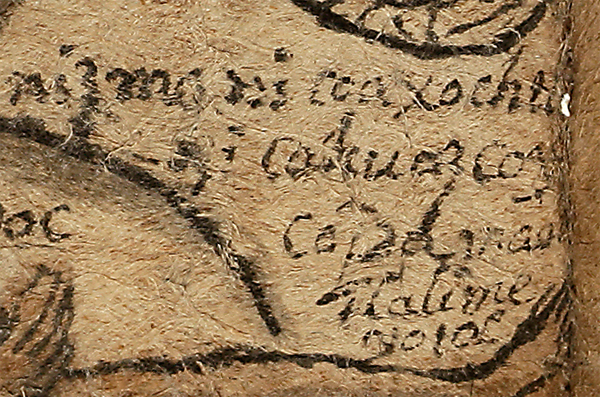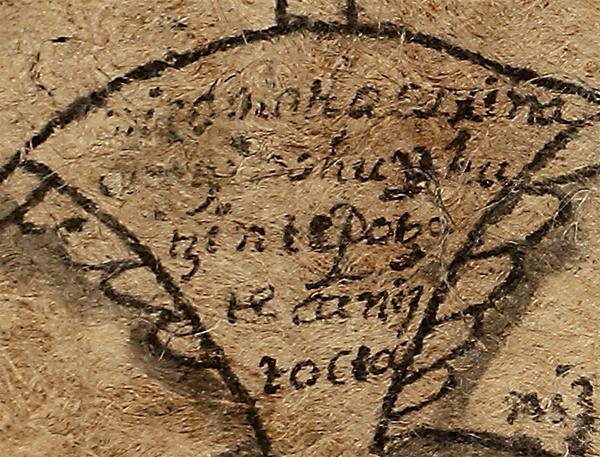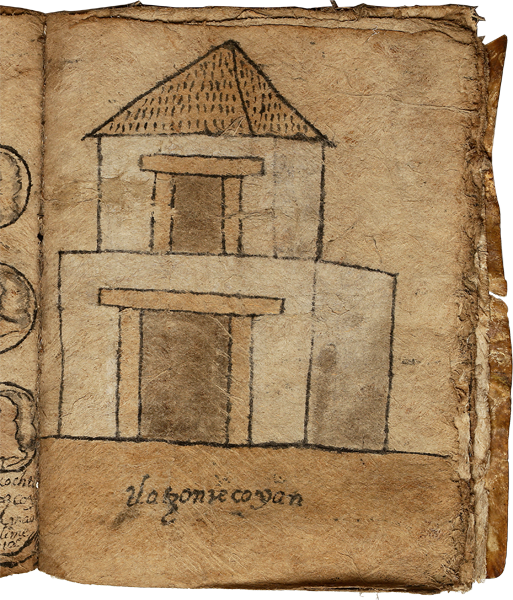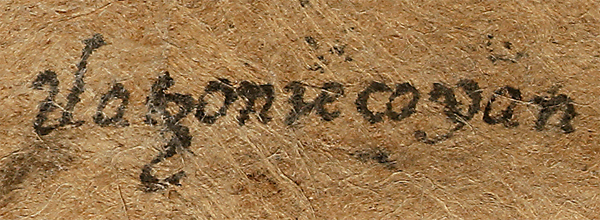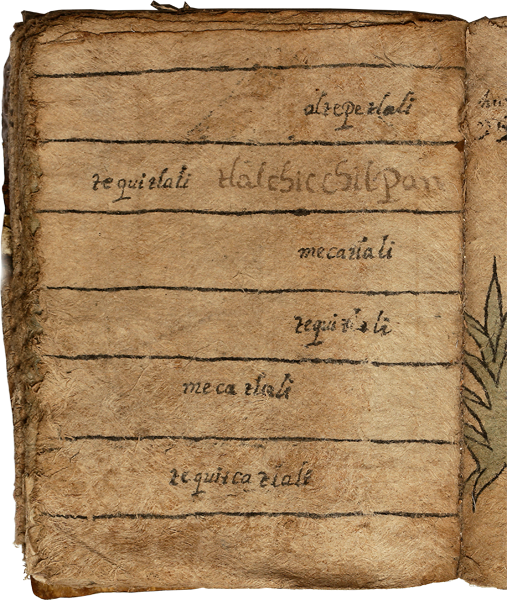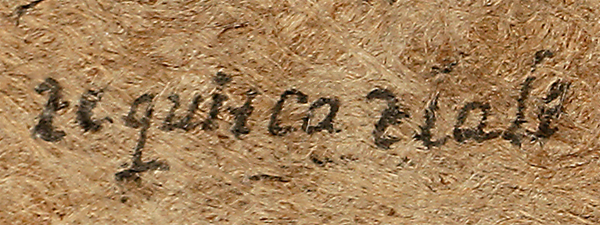This manuscript was given the number 711 in the Robertsons’ census of Techialoyan manuscripts from 1975 (published in the Handbook of Middle American Indians). As explained in an article in Tlalocan , this manuscript consists of twenty-four leaves of amatl (native paper), painted on both sides. It begins with an eight-page Nahuatl text. The supposed author of the text places himself in Tenochtitlan. The manuscript also mentions a man named don Melchor Moctezuma Tlacahuepan, who is said to have been appointed the local ruler in 1544 and the one who established the colonial tribute arrangements. We also see the role of a friar who apparently introduced Christianity to the local people. Many indigenous men and some women also appear in this manuscript. Some of the men are ancestors dressed in hides, and some are town-founder types dressed in the cotton clothing of the Spanish colonial era. The children and siblings of the highest indigenous lord are shown and named. They are all dons and doñas. Curiously, a genealogy that appears in this manuscript points to an ancestor described as a Tepotzoteca; none of the portraits of his descendants are labeled with names. Another featured pre-Hispanic ancestor is Acolnahuatl (intending Acolnahuacatl?), and again, the patterns of descent are not clarified. This manuscript offers a view of changes set in motion at the local level as a result of Spanish colonization, but it comes from the late colonial period. It strives to establish the antiquity of the town, and it tries to document the various areas where the town (or a given neighborhood) might have held land, the dimensions of those properties, and the boundaries with neighbors. Two interesting pages show strips of different kinds of land, labeled with specific names in Nahuatl. This manuscript has an association with San Miguel Mimiapan, part of the larger municipality of Xonacatlan, on the northeastern slopes of the Toluca valley, of the state of Mexico. In the Spanish colonial era, the town was called San Miguel Mimiahuapan, a spelling that appears fairly consistently in this manuscript. This is not to be confused with the San Miguel Mimiahuapan of the state of Tlaxcala. This manuscript belongs to the genre called primordial titles and is an example of the subset called Techialoyan codices or Techialoyan manuscripts. Techialoyans are mass produced, late-seventeenth or early eighteenth-century, Nahua revivalist manuscripts that strive to recapture ancient ways of documenting community history, elite indigenous lineages, and territorial extensions. (Stephanie Wood) ---- The lead scholars on this project are Florencio Barrera, who has provided the transcriptions of the Nahuatl texts and glosses, along with the translations to Spanish, and Stephanie Wood. Stephanie Wood has added an English translation of the Nahuatl, and she has edited the Nahuatl transcription and Spanish translation in a minor way , She has also added the image analysis and descriptions of full pages and their details. The digital images of this manuscript have kindly been provided by Sean Galvin of Ireland, in whose private collection the manuscript currently resides. Ellen Heenan (University of Oregon) has processed the images using PhotoShop and has inserted them into our Filemaker Pro database so that they could be annotated (2016).
Mimiapan, Manuscrito Techialoyan de
Title variants:
Cócide Techialoyan de San Miguel Mimiapan (o Mimiahuapan)
Principal editor:
Florencio Barrera and Stephanie Wood
